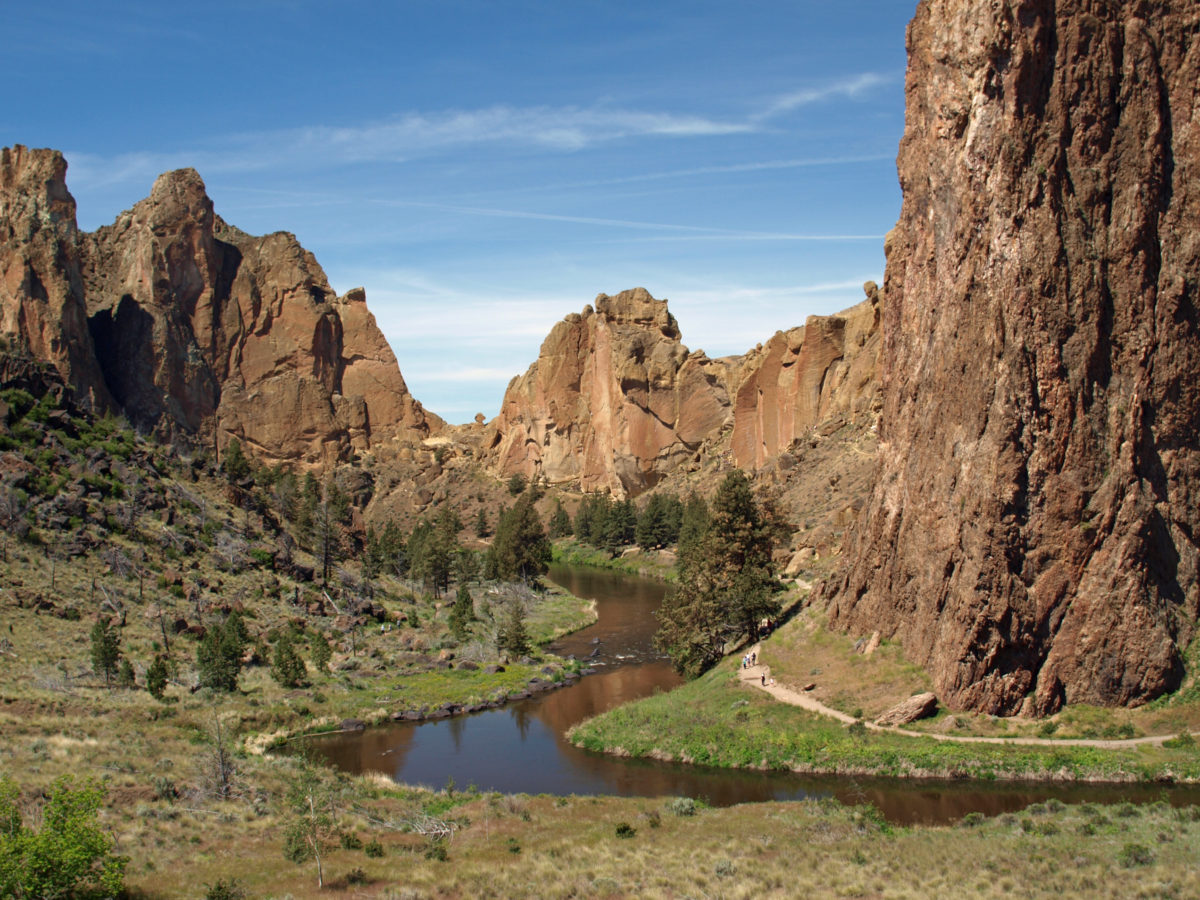By Alan K. Lee
Smith Rock State Park in Central Oregon is a mecca for rock climbers, but it’s more than that. Its natural beauty also attracts hikers, mountain bikers, horseback riders, birders and wildlife lovers, fishermen, photographers, and countless others.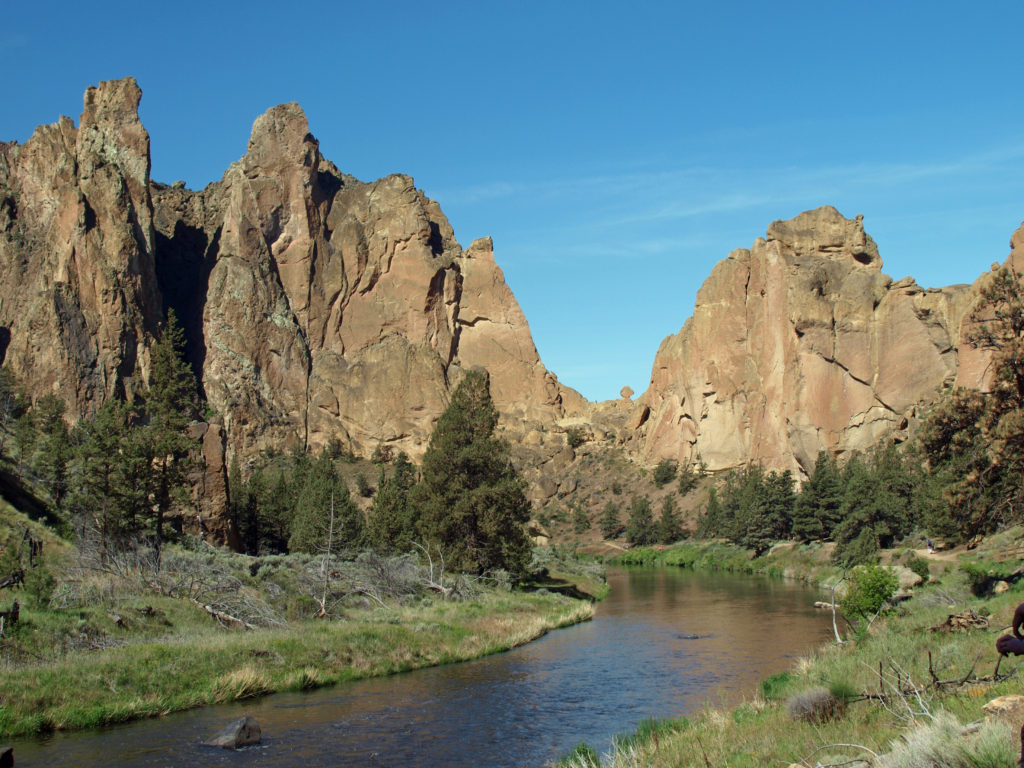
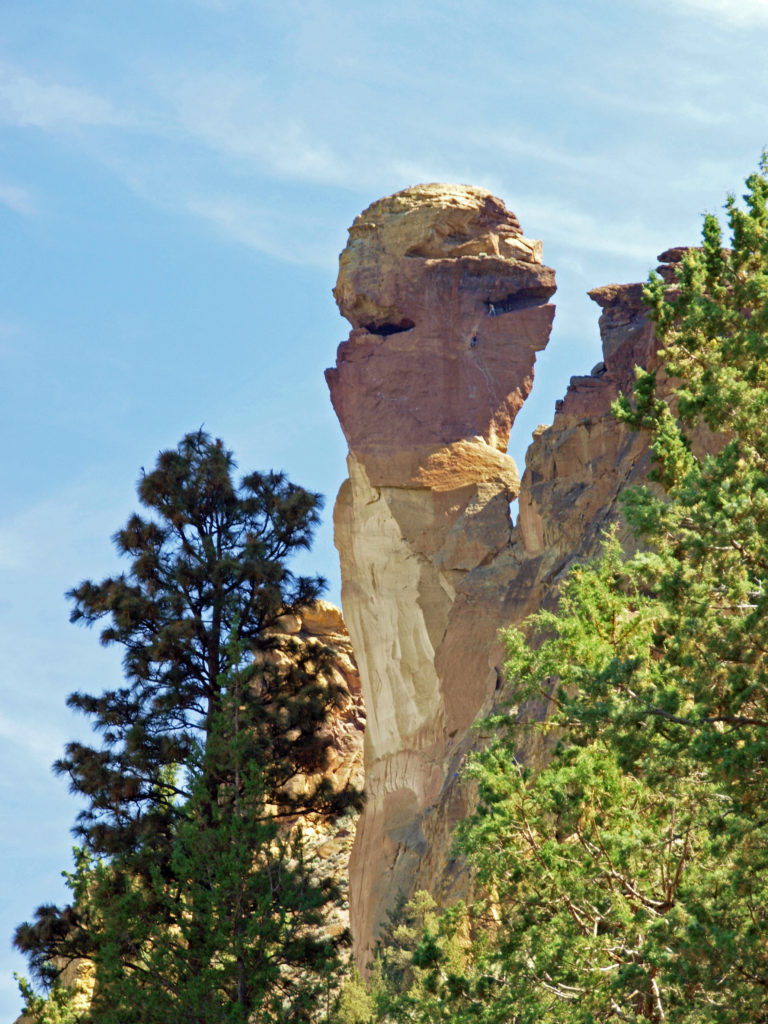 Several thousand climbing routes exist within the park, including more than a thousand bolted routes. Climbers literally come from all over the globe to climb here. And an extensive trail system within the park offers hikers a variety of routes of varying lengths and difficulty. Many of the trails are multi-use trails, open also to mountain bikers and horseback riders. Click here to view a map of the park trail system.
Several thousand climbing routes exist within the park, including more than a thousand bolted routes. Climbers literally come from all over the globe to climb here. And an extensive trail system within the park offers hikers a variety of routes of varying lengths and difficulty. Many of the trails are multi-use trails, open also to mountain bikers and horseback riders. Click here to view a map of the park trail system.
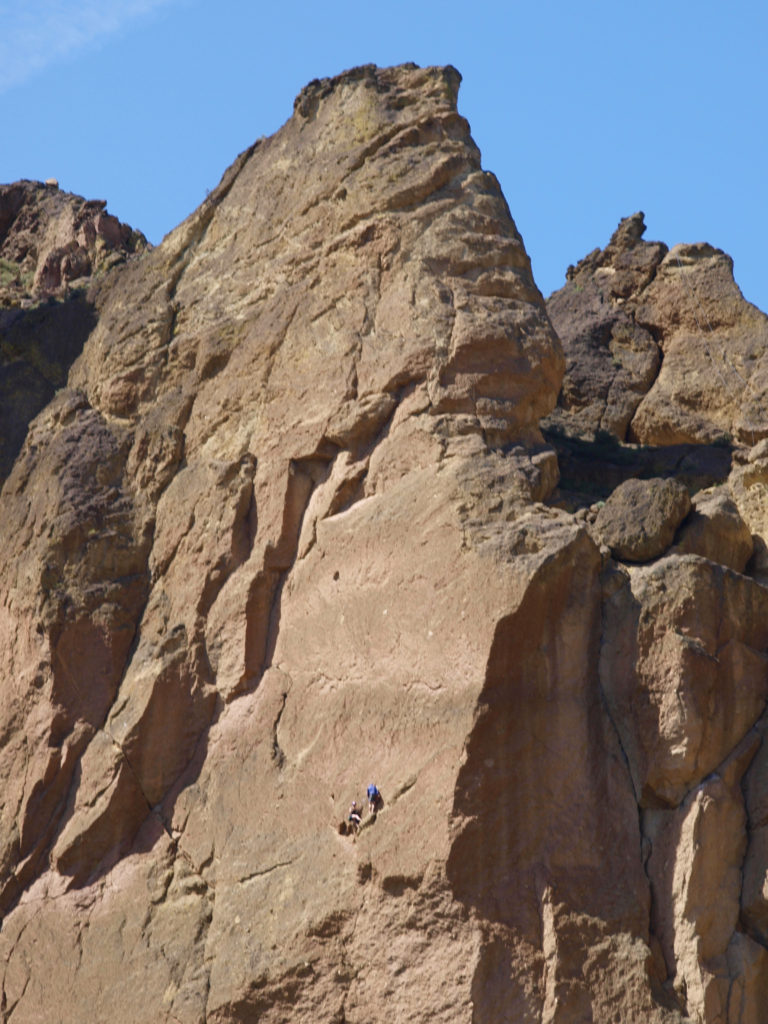 Thirty million years ago the area that is now Smith Rock was on the western rim of the Crooked River Caldera. Over time, nearby volcanic eruptions filled the caldera with ash that compacted into volcanic tuff. The tuff was later overtopped with basalt lava flows from vents about fifty miles away. The Crooked River then eroded much of that, leaving the formations we see today.
Thirty million years ago the area that is now Smith Rock was on the western rim of the Crooked River Caldera. Over time, nearby volcanic eruptions filled the caldera with ash that compacted into volcanic tuff. The tuff was later overtopped with basalt lava flows from vents about fifty miles away. The Crooked River then eroded much of that, leaving the formations we see today.
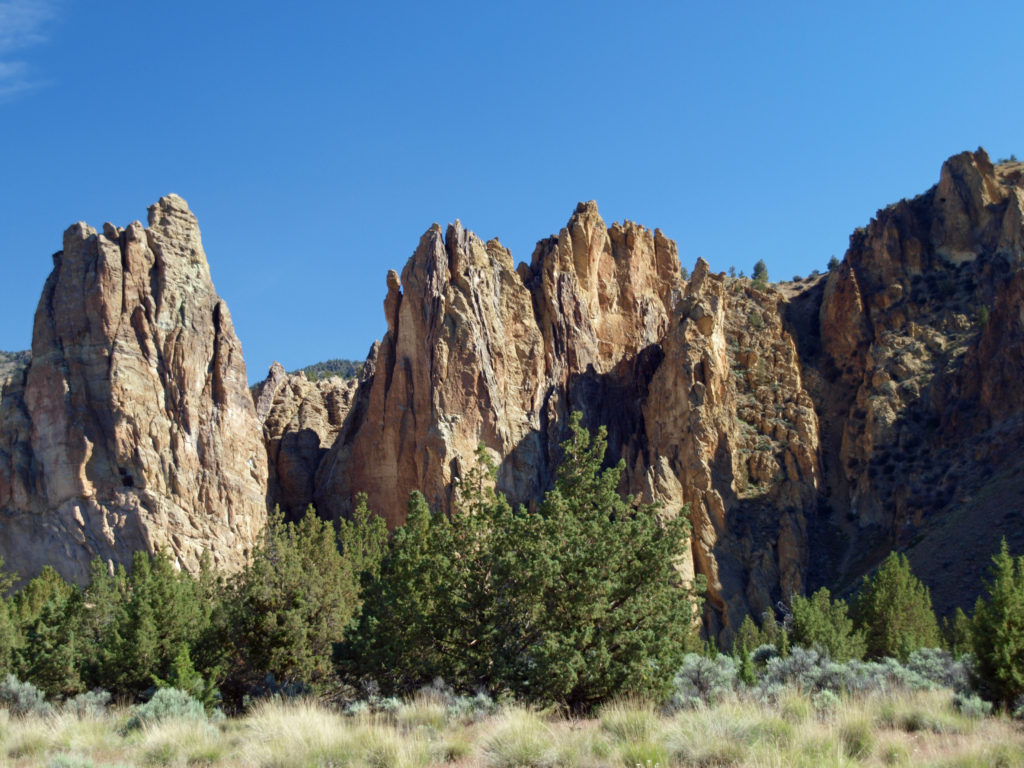
I’m not a rock climber, but I’ve been coming to Smith Rock on a fairly regular basis for more than half a century. Growing up, my family would often come to Central Oregon to camp and fish, and many times we would make the short detour to Smith Rock on our way home. I’ve been there when the park was almost deserted, something I will probably never see again. Park usage has grown exponentially in recent years, more than doubling in the five years between 2014 and 2019.
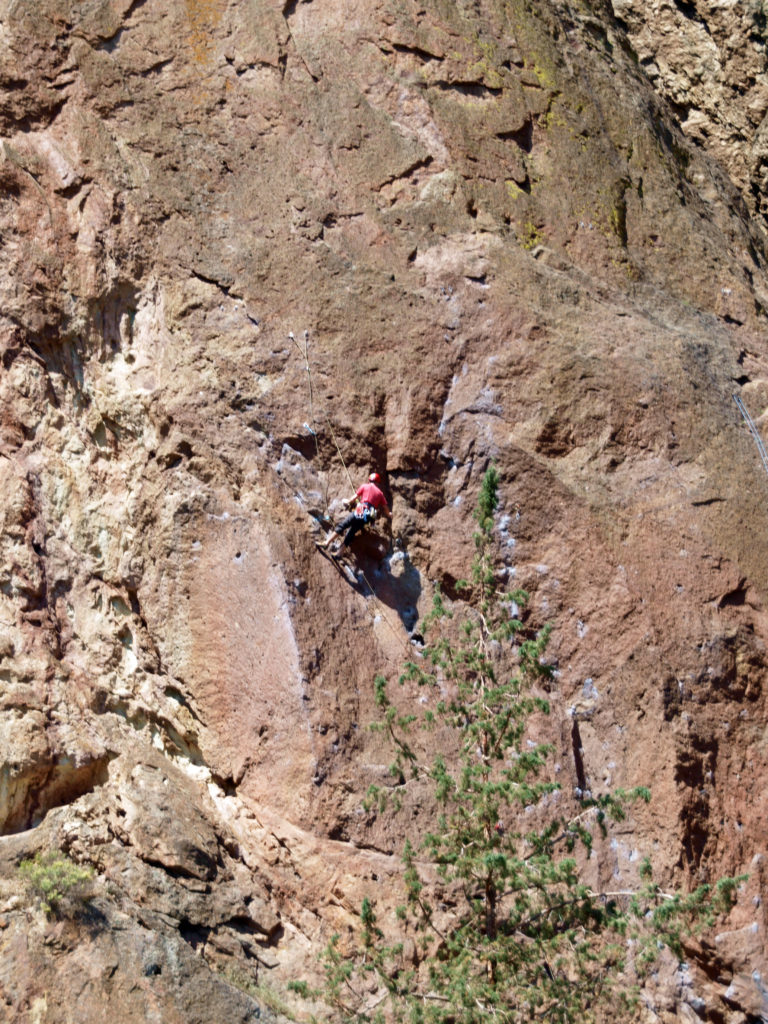
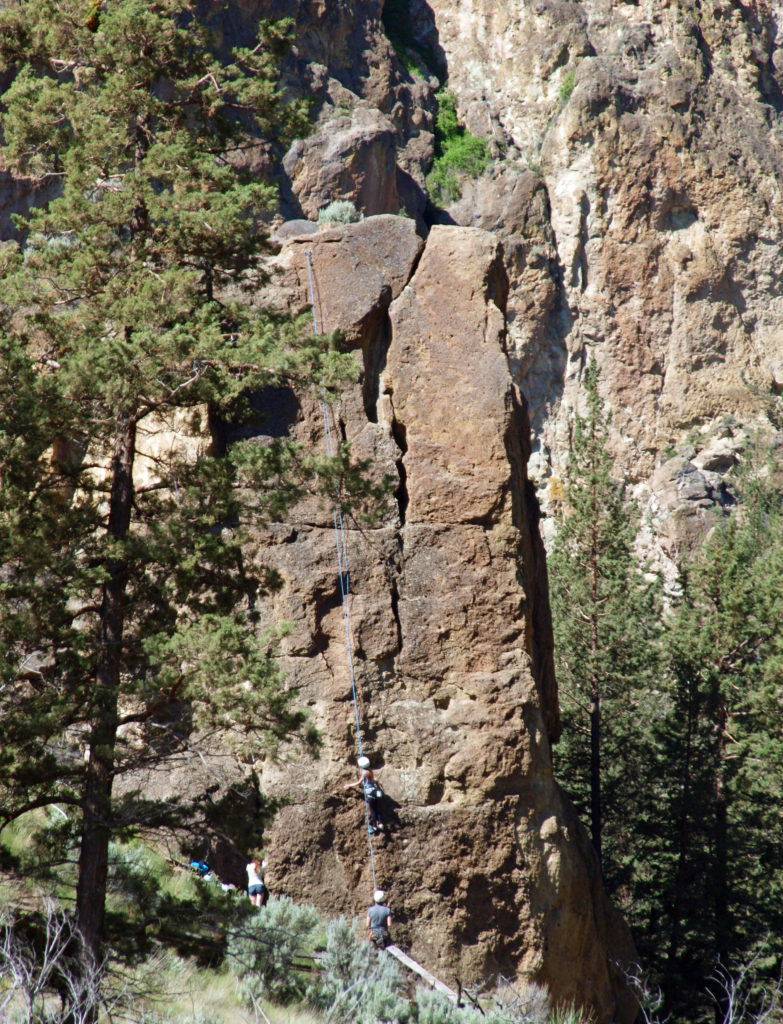 On summer weekends you need to come early to have a chance of finding a place to park. The parking areas fill up quickly, and it’s not unusual to see cars parked along both sides of the road leading to the park and people walking in the road. There has been a shuttle system proposed that would allow visitors to park in the nearby town of Terrebonne and bus into the park, but that (to the best of my knowledge) has yet to be implemented. Even during the week, and on spring and fall weekends, parking can be a problem.
On summer weekends you need to come early to have a chance of finding a place to park. The parking areas fill up quickly, and it’s not unusual to see cars parked along both sides of the road leading to the park and people walking in the road. There has been a shuttle system proposed that would allow visitors to park in the nearby town of Terrebonne and bus into the park, but that (to the best of my knowledge) has yet to be implemented. Even during the week, and on spring and fall weekends, parking can be a problem.

The park’s popularity is understandable, but with that has come problems of overcrowding, illegal parking and camping, pedestrian safety, conflicts with local residents and adjacent land owners, degradation of the park’s natural areas, and other problems. Oregon State Parks has recently finalized an updated park master plan that will address those issues. Changes could include creation of a new park entrance, additional parking areas, installation of “smart gates” and elimination of roadside parking, relocation and expansion of the walk-in bivouac camping area, relocation and expansion of the visitor center, a new day-use area, new trailheads, additional bridges across the Crooked River, a new trail to Terrebonne, and new composting toilets in the climbing areas.
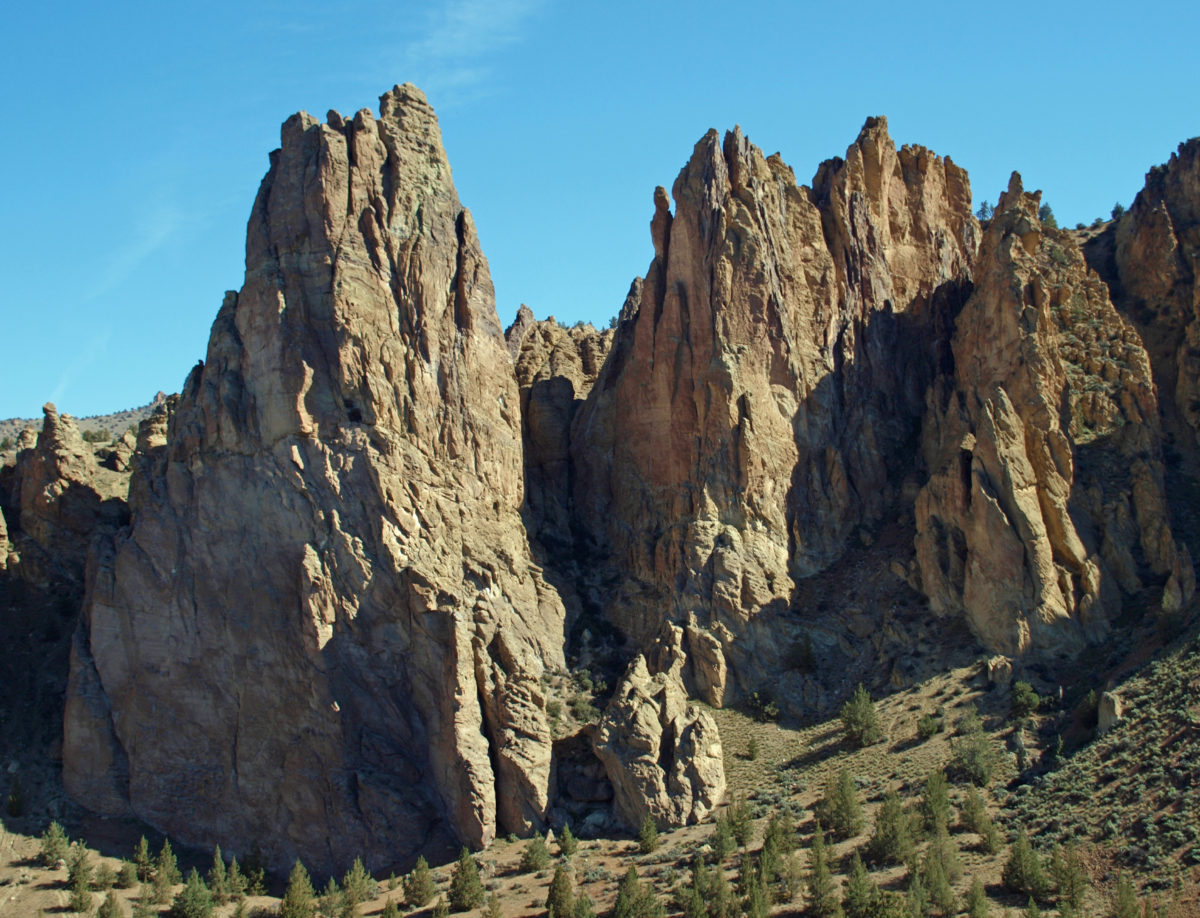
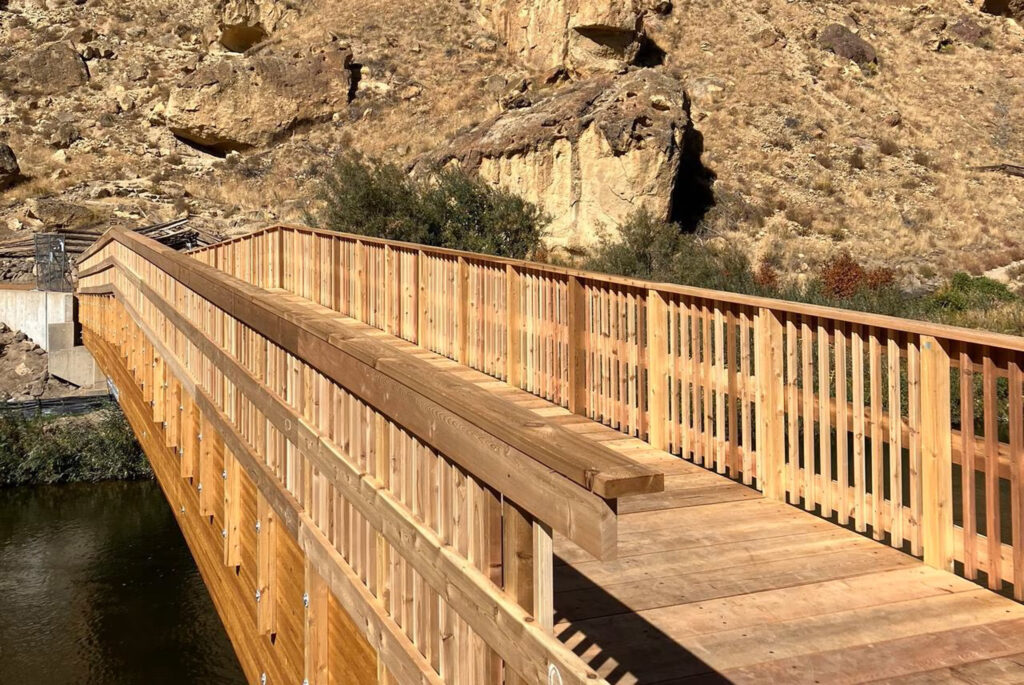
October 2023 update:
The trail bridge across the Crooked River that had been closed for reconstruction is now open. Construction of the the new, wider bridge (pictured above) was completed in early October.

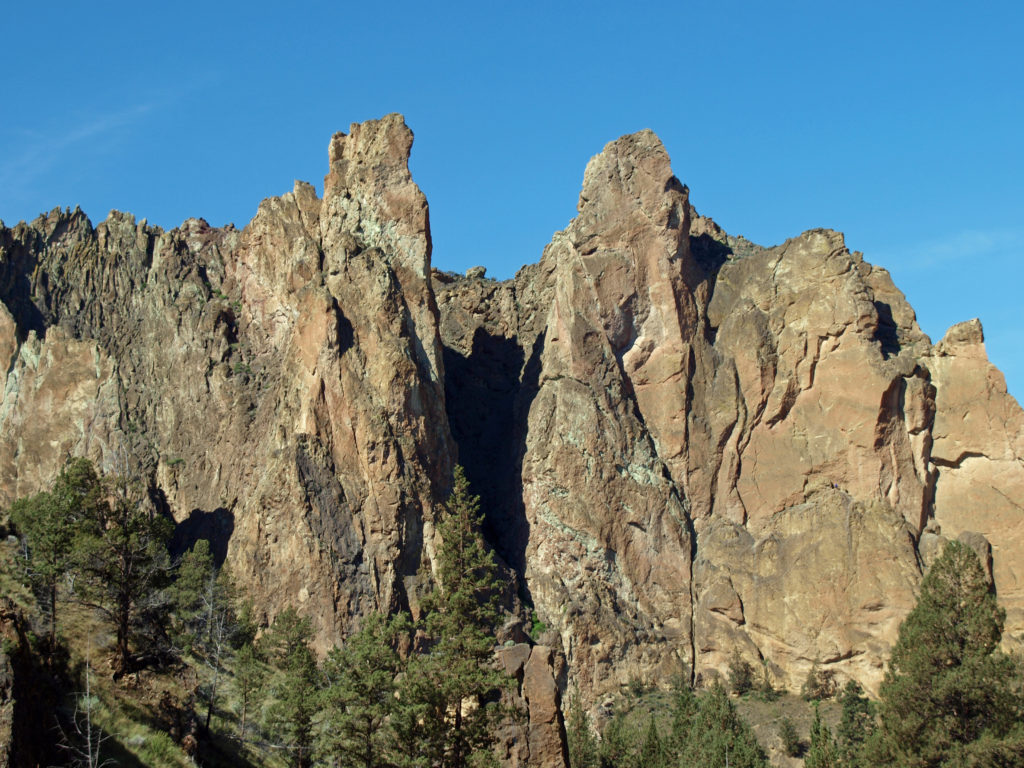 Despite the crowds and other problems, Smith Rock is a Pacific Northwest bucket list destination, not to be missed. It’s a spectacularly beautiful place. But if you’re looking for a wilderness experience, you won’t find it at Smith Rock (except maybe in the middle of winter). If you don’t mind sharing the place with others, though, the park is large enough that visitors tend to spread out, and even at full capacity the park doesn’t feel overly crowded if you get a little ways away from the parking areas. (A recent visitor survey found that 69% of the respondents felt the park to be somewhat to very crowded, however.)
Despite the crowds and other problems, Smith Rock is a Pacific Northwest bucket list destination, not to be missed. It’s a spectacularly beautiful place. But if you’re looking for a wilderness experience, you won’t find it at Smith Rock (except maybe in the middle of winter). If you don’t mind sharing the place with others, though, the park is large enough that visitors tend to spread out, and even at full capacity the park doesn’t feel overly crowded if you get a little ways away from the parking areas. (A recent visitor survey found that 69% of the respondents felt the park to be somewhat to very crowded, however.)

You can avoid the worst of the crowds and the hassles that the limited parking creates by visiting in the spring or fall during the week. Visiting in winter might even offer a bit of solitude, and the clear and cold days that are often found then can be one of the best times to photograph the magnificent rock formations. And they are truly magnificent.
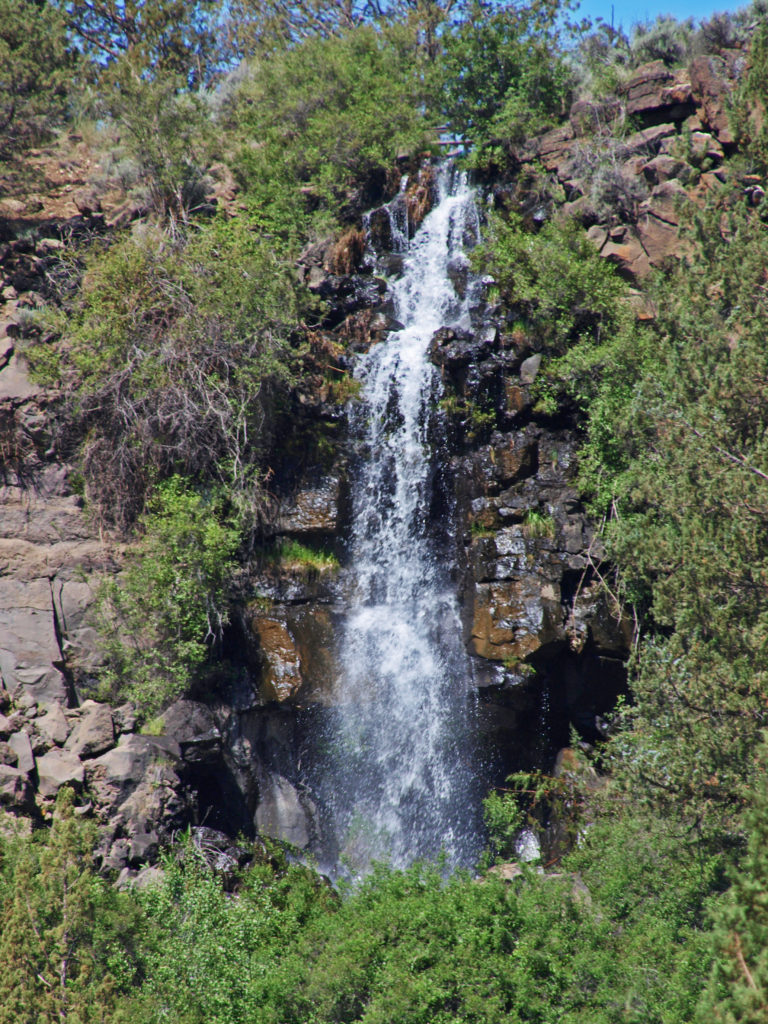 The park is located just east of the town of Terrebonne, which is about 25 miles north of Bend, Oregon, and about 140 miles southeast of Portland. For more information, go to the Smith Rock State Park website, or the independent SmithRock.com site.
The park is located just east of the town of Terrebonne, which is about 25 miles north of Bend, Oregon, and about 140 miles southeast of Portland. For more information, go to the Smith Rock State Park website, or the independent SmithRock.com site.
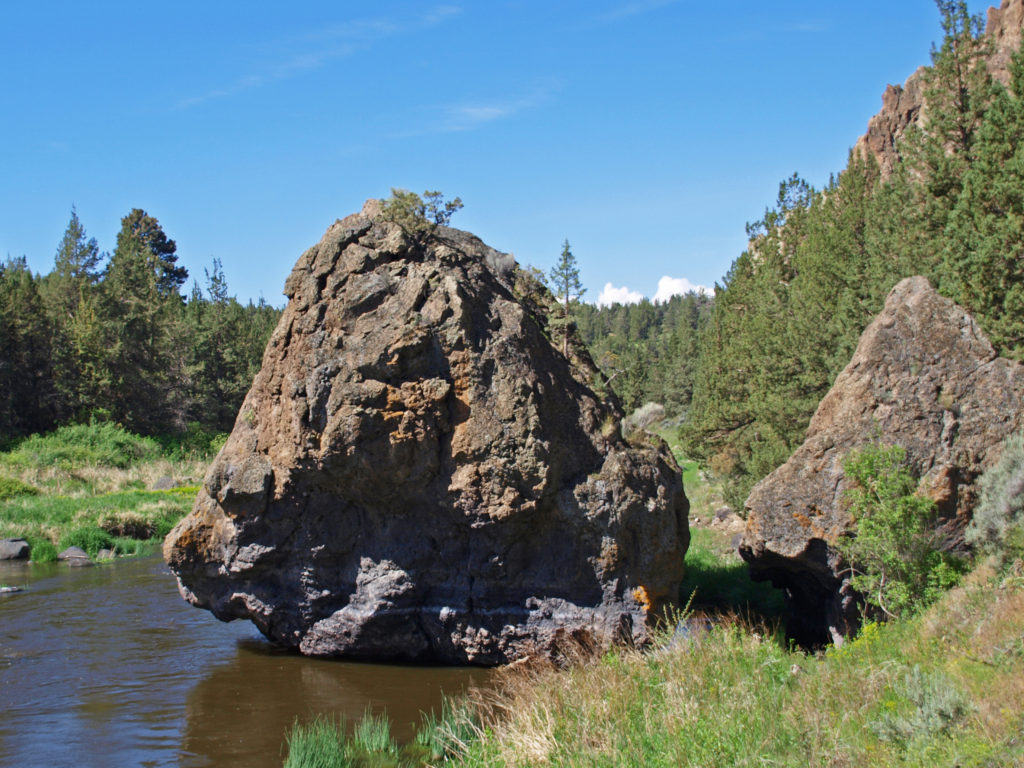
Originally posted on March 11, 2019. Updated most recently on October 11, 2023.
All photos © Alan K. Lee, except as noted.

